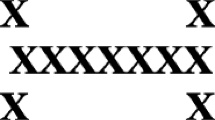Summary
Free-flying black-chinned hummingbirds (Archilochus alexandri) at a site in southeastern Arizona were attracted to artificial feeders displaying narrow spectral bands of light (7 nm half band width). The birds were taught to discriminate between pairs of wavelengths of approximately equal brightness but with a spectral separation of 10 nm. After training, performance of the birds was not significantly changed by alterations in the relative intensities of the two lights. Moreover, when the spectral composition of the test and training lights was made identical, the birds did not learn to make a discrimination on the basis of intensity differences of 0.5 or 1 log unit. In the learned foraging behavior of these hummingbirds, the salience of brightness is therefore inconsequential relative to hue.
Discrimination scores for a constant 10 nm separation of test and training wavelengths were determined between 410 and 650 nm. This measure of the spectral dependence of wavelength discrimination shows a deterioration of performance at the red end of the spectrum but not in the blue and violet. Moreover, the minima at 585 and 555 nm indicate more structure than is present in this region of the spectrum in the human hue discrimination curve, and are similar but not identical to data on pigeon. These results are consistent with a growing body of evidence suggesting that the color space of birds may be more than three dimensional.
Similar content being viewed by others
References
Bowmaker JK (1977) The visual pigments, oil droplets, and spectral sensitivity of the pigeon. Vision Res 17:1129–1138
Delius JD, Emmerton JA (1979) Visual performance of pigeons. In: Granda AM, Maxwell JH (eds) Neural mechanisms of behavior in the pigeon. Plenum Press, New York London
Delius J, Perchard R, Emmerton J (1976) Polarized light discrimination by pigeons and an electroretinographic correlate. J Comp Physiol Phychol 90:560–571
Fager LY, Fager RS (1981) Chicken blue and chicken violet, short wavelength sensitive visual pigments. Vision Res 21:581–586
Goldsmith TH (1980) Hummingbirds see near ultraviolet light. Science 207:786–788
Goldsmith TH, Goldsmith KM (1979) Discrimination of colors by the black-chinned hummingbird,Archilochus alexandri. J Comp Physiol 130:209–220
Govardovskii VI, Zueva LV (1977) Visual pigments of chicken and pigeon. Vision Res 17:537–543
Graf VA (1979) Four spectral mechanisms in the pigeon (Columba livia). In: Granda AM, Maxwell JH (eds) Neural mechanisms of behavior in the pigeon. Plenum Press, New York London
Graf V, Norren DV (1974) A blue sensitive mechanism in the pigeon retina: λmax 400 nm. Vision Res 14:1203–1209
Huth HH, Burkhardt D (1972) Der spektrale Sehbereich eines Violettohr-Kolibris. Naturwissenschaften 59:650
Kreithen ML, Eisner TH (1978) Ultraviolet light detection by the homing pigeon. Nature 272:347–348
Kreithen ML, Keeton WT (1974) Detection of polarized light by the homing pigeon,Columba livia. J Comp Physiol 89:83–92
Norren DV (1975) Two short wavelength sensitive cone systems in the pigeon, chicken and daw. Vision Res 15:1164–1166
Seligman MEP (1970) On the generality of the laws of learning. Psychol Rev 77:406–418
Wessels RHA (1974) Tetrachromatic vision in the daw. Doct Thesis. Rijksuniversiteit Utrecht
Wright AA (1972) Psychometric and psychophysical hue discrimination functions for the pigeon. Vision Res 12:1447–1464
Wright AA (1979) Color-vision psychophysics: a comparison of pigeon and human. In: Granda AM, Maxwell JH (eds) Neural mechanisms of behavior in the pigeon. Plenum Press, New York London
Wright WD, Pitt FHG (1934) Hue discrimination in normal color vision. Proc Phys Soc (Lond) 46:459–473
Author information
Authors and Affiliations
Additional information
This work was supported by NIH grants EY03266 and EY00222. We are indebted to Sally and Walter Spofford, who generously allowed us to work at their home, Aguila-Rancho, during May and June of 1980, and without whose kind help these experiments could not have been performed.
Rights and permissions
About this article
Cite this article
Goldsmith, T.H., Collins, J.S. & Perlman, D.L. A wavelength discrimination function for the hummingbirdArchilochus alexandri . J. Comp. Physiol. 143, 103–110 (1981). https://doi.org/10.1007/BF00606073
Accepted:
Issue Date:
DOI: https://doi.org/10.1007/BF00606073




